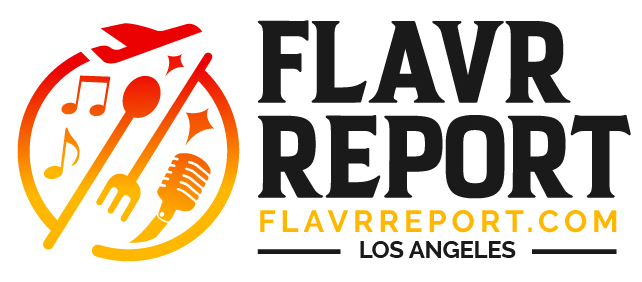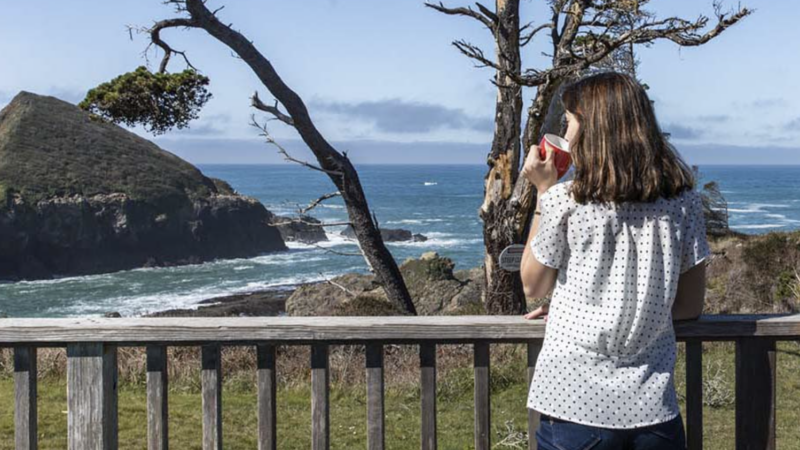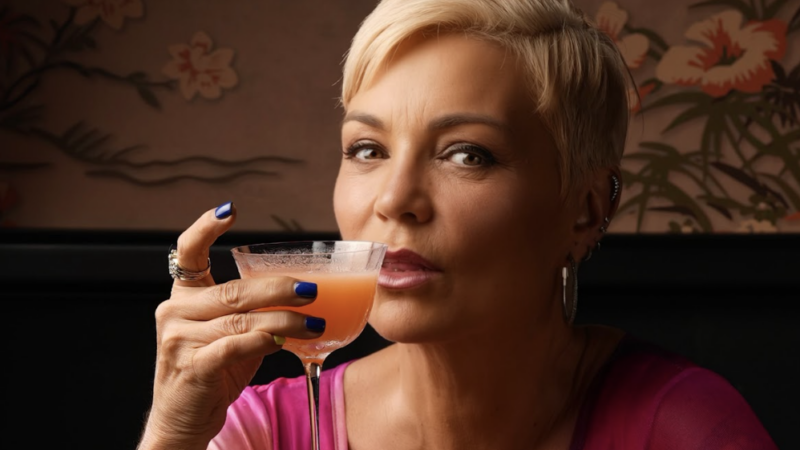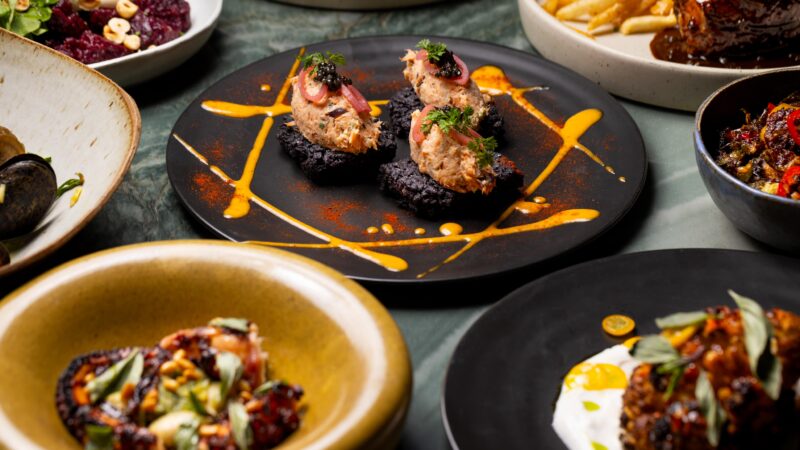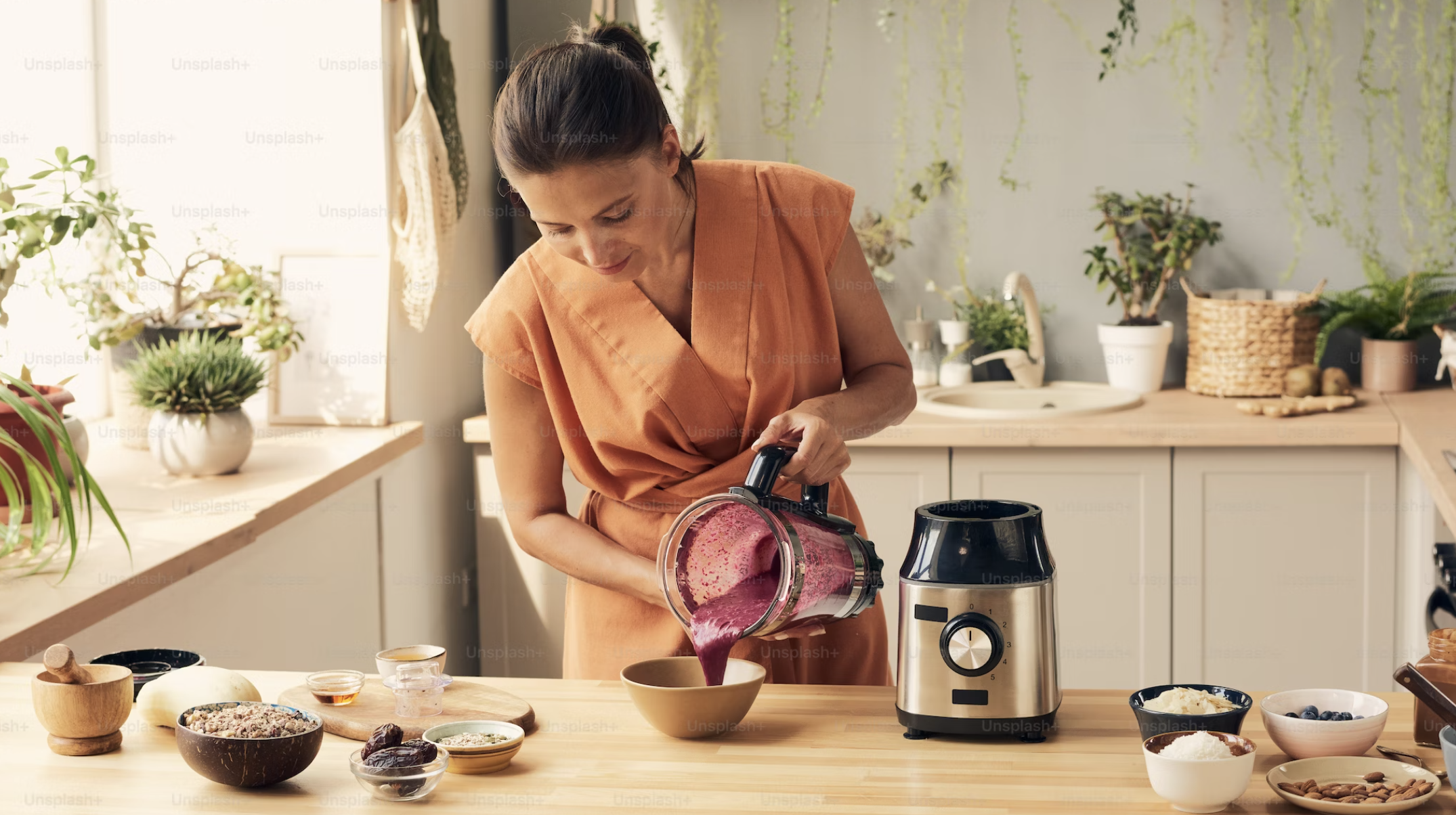Little River Inn in Mendocino Brings Memories this Spring: Mother’s Day brunch, Anderson Valley Pinot Festival and more!
Little River Inn in Mendocino Brings Memories this Spring: Mother’s Day brunch, Anderson Valley Pinot Festival and more!
This time of year brings all kinds of delights to the historic Little River Inn on the splendid Mendocino Coast of Northern California.

Their lavish gardens are bursting with colorful flowers, Sunday brunch will once again be served at their restaurant, a Mother’s Day brunch to remember is planned, wine-lovers can take advantage of a Pinot festival package in the nearby Anderson Valley, and epicureans will be thrilled by an Uni and Whiskey pairing dinner that coincides with the coast’s popular Urchin Fest this June.

Sunday Brunch is Back
The return of Sunday Brunch at Little River Inn’s restaurant.
The public and the Inn’s guests are welcome to indulge from 8am to 11am every Sunday. Dishes on offer include Ole’s Favorite Breakfast, which is two Swedish hotcakes, two eggs, and a choice of bacon, pork sausage or chicken apple sausage; Avocado Toast with Radish, Sprouts, Tajin, Cotija cheese, and a Baby Lettuce Salad; and a Seasonal Frittata with Baked Eggs, Chef’s Selection of Seasonal Vegetables, Cheese, Homestyle Potatoes, and a Choice of Toast.
Celebrate Mom!
On Mother’s Day, Sunday, May 12, Moms will be treated to a feast at brunch from 8am to 12pm.
The regular brunch menu is available, plus specials for Mother’s Day, including a crispy Croque Madame sandwich and delectable Bread Pudding French Toast. Mimosa flights will be on offer, with exclusive flavors like Pineapple/Lime/Cayenne, Grapefruit/Thyme, Guava/Rosemary, and Strawberry/Mint. Guests pay an additional $35 for four 6-ounce mimosas. To make a reservation, call 707.937.5942.
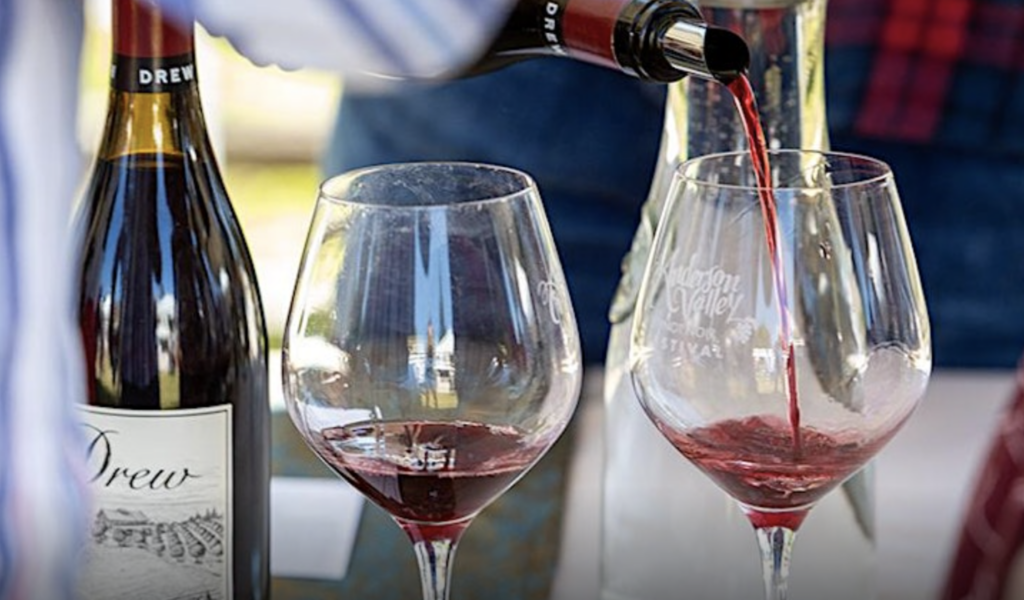
Experience the AV Pinot Festival Package
Nobody does Pinot Noir like Anderson Valley, with an unmatched combination of ruggedly beautiful terrain and casually elegant tasting rooms, it is a true hidden gem.
There’s no better way to experience fantastic wines and stellar atmosphere than at this year’s Anderson Valley Pinot Noir Festival (May 17-19).

Little River Inn has crafted a package – good May 16-20, 2024 – that includes two nights in an Ocean view room and two tickets to the festival. More than 50 wineries will pour, including more than a dozen prestige labels from Napa and Sonoma that covet the fabulous local fruit.
Some of the county’s best chefs will serve Pinot-perfect pairings, and attendees will have the opportunity to bid on exclusive wine and experiences during the ever-popular silent fundraiser.
There will be a Grand Tasting that includes Rosés and Sparkling Wines in addition to those phenomenal Pinots, educational seminars with winemakers, live music, a BBQ, and more, all set next to the beautiful vineyards of Anderson Valley. AV Pinot Festival Package, good May 16-20, 2024, $990 for three nights or $714.50 for two nights (two-night minimum). To book, go to littleriverinn.com and search for the festival dates.
Uni Meets Whiskey at an Exclusive Dinner
Little River Inn’s Chef de Cuisine Joe Perez crafts delectable uni-centric dishes and whiskey expert Jonathan Darrow brings his wisdom around Japanese whiskies to create a one-of-a-kind pairing experience in this not-to-be missed dinner. Guests learn about urchin and the local tidal environment while enjoying 6-courses and a variety of Japanese whiskies, along with one special cocktail. The event is timed to take place during the area’s annual Mendocino Coast Purple Urchin Festival from Friday, June 14 to Sunday, June 16, when the coast hosts multiple urchin-related events and local restaurants offer special uni dishes. Uni and Whiskey Pairing Dinner, Saturday, June 15, 2024. Little River Inn’s Abalone Room, 6:30 pm, $250 per person, and tickets can be purchased here.

Exceptional Oceanic Cocktail for Kelp and Urchin Fest
Little River Inn has confected a cocktail specially for Urchin Fest (which is joined this year by the North Coast KelpFest!, a month-long exploration of the beauty and benefits of the irreplaceable underwater ecosystem). The Van Damme Seaweed Spritzer is composed of locally foraged seaweed- and cucumber-infused vodka and dry cucumber soda, and garnished with a seaweed pickled cucumber ribbon. Available for the duration of the KelpFest! at the Little River Inn restaurant and Ole’s Whale Watch Bar, from May 18 to June 16, 2024. Price: $15.
Little River Inn
Little River Inn is a family-owned and operated historic resort in Northern California that is home to a chef-driven restaurant, a nine-hole Audubon-certified golf course (suitable for all skill levels), professional tennis courts, and the friendliest service on the Mendocino Coast.
Ideal for the entire family (and pet-friendly as well), the Inn has 65 guest rooms ranging from the economical to the luxurious. Several private meeting and special event spaces with stunning ocean and garden views make the Inn an excellent venue for small- to medium-sized events and corporate retreats.
The restaurant, helmed by CIA-trained Executive Chef Marc Dym, is a destination unto itself and the delicious, often hearty California coastal cuisine has a dedicated following, with many items, such as Ole’s Swedish Hotcakes and the Blackberry Cobbler, lauded by visitors and locals alike.
The dinner menu can be enjoyed in the charming dining room or outdoor garden area, while breakfast is available via room service, to be savored from the comfort of one’s own private deck (or even in bed).
Ole’s Whale Watch Bar is a classic local hangout where guests gather for libations or a casual bite, and at certain times of the year, to watch the migration of the gray whales. The Inn also offers massage services in both the spa room and also in-room. Overseen by fifth-generation owner Cally Dym, Little River Inn was proud to celebrate its 80th anniversary in 2019.
Little River Inn is located two miles south of Mendocino overlooking the Pacific Ocean, at 7901 N. Highway One, Little River, CA 95456. For reservations and additional information, call 707.937.5942 or visit www.littleriverinn.com.
Oregon Wine shares a Tasty, New Release, with Winemaker Aaron Lieberman from Iris Vineyards
Oregon Wine shares a Tasty, New Release, with Winemaker Aaron Lieberman from Iris Vineyards
Sure, Oregon Wine is world-famous for its Pinot Noir. And rightly so, as the area produces incredible expressions of the varietal. But that’s not all they can do.
Award-winning winemaker Aaron Lieberman wants the world to taste and discover all of the incredible wines from the area including Iris Vineyards’s new Pinot Gris which has won acclaim several years in a row.

Today, Winemaker Aaron Lieberman from Iris Vineyards sits down over zoom to talk about his inspirations, his favorite wines, food pairings and what’s next for Oregon Wine.
The conversation has been edited for length and clarity. Find the whole conversation on our YouTube channel.
There’s so much to go over with you because you’re in a great area of Oregon.
Last year we had the privilege of covering the 2022 McMinnville Wine Classic, your Pinot Gris won Best in Show and Best White varietal.
According to press announcements it’s the first time ever for a Pinot Gris. What was it about that bottle and that year that brought you so much acclaim?
The vintage we won that on was the 2020, and I think our Pinot Gris is fairly consistent. So I actually personally felt that the 2021 vintage was better than the 2020. What I think is going on there is that in our growing area Southwest of Eugene we have our vineyard in what’s called the Lorane Valley. We’re a relatively high elevation vineyard compared to the rest of the Willamette Valley. We get a lot more hang time on our Pinot Gris, which allows more flavor development and preservation of acidity, as well as slower and lower accumulation of sugar.
So we ended up with a higher acid, lower alcohol wine that’s very expressive in terms of fruit flavors.
I wanna let our audience know a little bit about your background and what brought you to where you are today. Your education in soil and winemaking, but I hope you’ll touch on your Peace Corps time, and your work in Guatemala with soil education.
As I was finishing up my Bachelor’s Degree at Oregon State University, I became involved with a couple of different grad students, helping them with their research projects, basically. At the beginning of my junior year [I had already] switched my major from Pre-Vet to Crop and Soil Science.
So the projects I was working on with these grad students involved soil research. One of these grad students had been in the Peace Corps and talked about it frequently and also had a professor who had been in the Peace Corps. They both inspired me to look into it and do it.
I ended up going to Guatemala. The project I worked on was called Corn and Bean Seed Improvement and Post Harvest Management. We were trying to counteract the invasion of commercial corn seed into Guatemala and Latin America. It’s replacing the land raise varietals or the traditional varietals of corn. We were working with those traditional varietals to improve their performance in the field by selecting the plants that were growing well and were the most disease resistant.
The program started four years before I got to Guatemala, so I was the third volunteer and we were really showing some really good results.
Something I love about winemaking is such a mix of science and magic, or science and artistry. And it sounds like science is very strong with your background and the magic that you bring to the bottle.
Yes, I would agree with that.
So let’s switch back from Guatemala. You’ve got some great soil types. Let’s talk about how you use the soils in your region to bring such delicious flavor, characteristics and aromas.
In our vineyard, we do have some Jory soils, and I think most people who know about the Willamette Valley know that Jory is the preferred soil in the region particularly for Pinot Noir.

Our vineyard is dominated by Bellpine soil. Bellpine is kind of an analog of Jory, but it’s formed in sedimentary rock rather than basaltic rock or volcanic rock. So there’s some significant differences in the chemical makeup of the soil that contributes to the flavor difference in our Pinot Gris compared to some others.
The last time I visited, what I heard overwhelmingly from the winemakers is you have to be okay with inconsistency year after year.
I want my wines to represent the area that they’re from and the varietal from which they’re made and different weather during each growing season as part of that representation.
So based on the weather and the level of ripeness of the fruit and what we’re tasting in the grapes before we bring them in, we will make some adjustments to how we do the vinification to try to push it in one direction or another, to be at least somewhat consistent.
Let’s talk about the wines themselves.
Let’s start with the Pinot Gris. The comment I hear the most is white peach. That’s new. I usually hear pear, red apple peel, quite a bit of citrus.

Commonly I get stone fruit comments on our Chardonnay. Whether it’s our still Chardonnay or our Blanc de Blanc.
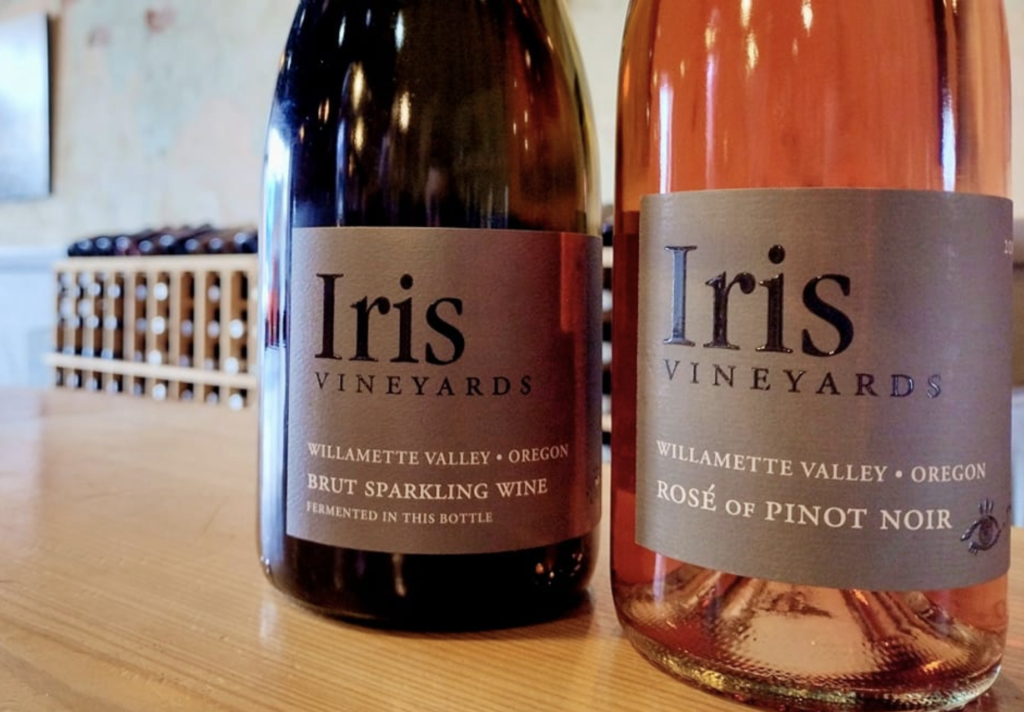
Then there’s the Brut Rose, the Pinot Noir 2021, the House Red Blend. A lot of people will remember 2020 and how that vintage went for us. I refer to that year as the worst year of my life.
Let’s talk a little bit about what made it such a bad year.
We had beautiful weather during bloom. I started to feel like it was going to be a really great vintage. We’re seeing a really modest crop load and smallish berries, which leads to more fruit forward. Right around Labor Day, the major fires started. Smoke came into the valley for about two weeks which was extremely disheartening.

In the Willamette Valley that was really our first experience with that level of damage to the fruit. So a lot of people were scrambling, worried, and ultimately didn’t produce Pinot Noir in 2020.
We made less than we had planned. We applied some techniques to mitigate the smoke effect.
Can we talk about what you did to mitigate?
Well, there are two things that helped the most. One, we sent some grapes to California to go through a process called flash. It’s a kind of thermovinification method where the must is heated to 80 degrees celsius and then pumped into a vacuum chamber that boils at a much lower temperature. The water and the skins of the grapes “flashes” to steam in the the vacuum chamber. That steam carries away a lot of bad things. Those things are responsible for the bulk of the smoke effect that you might find in a wine.

Then following vintage and some aging, we did some reverse osmosis to remove the smoke effect from the rest of our wine.
At the tail end of vintage, I had surgery for appendicitis. As I was about recovered from that, I got covid right at the end of 2020.
Fortunately ’21 and ’22 were very similar to 2020 and how the vintage started and ended up, we had some really beautiful fruit and beautiful wines. I’m really excited about ’22 based on what we have in barrel right now.
Some people approach wine from a food and wine pairing point of view. I’m not sure if you are a chef or a home cook, but do you have any suggestions for great food pairings for some of your bottles?

I think with our Pinot Gris, I really enjoy seafood.
It’s really good with salad. Brut Rose, I always say if you’re making a dinner and you’re not quite sure what wine to serve with your dinners sparkling wine is always a a crowd pleaser. It’ll go with dishes from salad to steak or pizza. The acidity of sparkling wines makes them really versatile in any kind of food. Fatty foods in particular pair well with more acidic wines, kind of a palette cleansing.

For our Pinot Noir, traditional pairings like salmon and chicken.
When you’re going through a year, from growth to harvest, what are the traits or elements that get you excited saying it’s gonna be a good year?
Last spring we had a couple of fairly severe frosts after bud break and it was an interesting year because of that. We ended up, to everyone’s surprise, with a vintage that was quite nice and yields that were not really affected by the frost. The vines bounced back with their secondary and tertiary buds set fruit, set a really good crop. We got a nice batch of wine out of it.

If we get into harvest in the rainy season, sometimes your hand is forced and the grapes start to get ripe, the skin softens an they become more susceptible to botrytis and other bad things that you don’t want.
But ’22 was nice. We weren’t really forced right up until the end. Around October 20, we had the first big rainstorm come in. 20% of our fruit still hanging. We brought most of it in before that big rain.
But I think we had really good ripeness even at that point.
You’ve been doing in-person and zoom wine tastings, do you have a favorite part of that wine tasting process?
My favorite part, without a doubt, is just when I see somebody tasting my wine and the look on their face shows me that they’re really enjoying it. That’s a big reason why I’m in this industry, what we do makes people happy.
Do you have a certain memory of including either your wine or someone else’s wine in a great celebration?
Several memories. My father and I had a wine business of our own from 2002 to 2015. [A few years in] we had a celebration at a steakhouse in Portland. I ordered a Puligny Montrachet off the menu. I still remember that wine quite vividly and how impressive it was. That changed my mind about chardonnay in some ways.
In Oregon, there’s a lot more chardonnay coming out of the Willamette Valley now is a good thing, but it’s still been an uphill battle for producers to get that chardonnay wine passed the gatekeepers, the distributors.
You go to a distributor and they’re like, “Everybody drinks California Chardonnay or white burgundy. They don’t know about Oregon Chardonnay. And when you say Willamette Valley, everybody thinks Pinot Noir, which is great. But we’ve kind of pigeonholed ourselves with that. There are a lot of other nice things that can come out of this valley like Pinot Gris and Chardonnay. So we have some work to do on the marketing and publicity to let people know.
Any lessons your winemaking team has learned this past vintage that you can share?
I think that happens every year. Let’s not assume that I know everything because I learn stuff every year as well.
One of the things that I really stress with people who are working for me during harvest, is the importance of fermentation temperature.
It’s with white wine, with aromatic whites in particular. You really have to keep the temperature under control. Yeast likes to get hot and ferment fast, so you have to keep those ferments cool, whatever the method is if you’re in stainless with jacketed tanks or if you’re in barrel and you’re taking the barrels outside at night or wetting them down to keep the temperature down. It’s super, super important.
With the white wines, you get a temperature or a fermentation that’s too hot and you end up with a wine that’s like generic white wine. It doesn’t have varietal character left in it, that’s something I stress a lot.
Then when you talk about red wines, the style of red wine that you’re making is so dependent on a lot of things, but temperature is a big thing. So if you do a cool ferment on a red wine, you’re going to have a red wine that’s fruit forward and aromatic, but it’s not going to be very extracted. It’s not gonna have a big tannic backbone to it. In that way it would be out of balance.
Like with our Willamette Valley Pinot Noir, we do a couple of different fermentation methods that end up having different peak fermentation temperatures and then we blend them together to get a wine that is crowd pleasing, easy balanced. So one of my big things is temperature.
Are there any topics in winemaking that you wish got more attention?
The fact that I don’t do this alone. If I didn’t have a team behind me doing the right thing and supporting production in the winery, starting with our vineyard and our vineyard manager, who is amazing, grows amazing fruit, all the way through to the marketing team selling the wine or promoting the wine and the sales team selling the wine. I think it’s really important for people to understand that it’s really a team effort. I’m the winemaker, I get the publicity, I get the recognition but there’s no way I could do it by myself.
I’m sure you talk to young winemakers all the time. Is there one huge piece of advice you would give a young winemaker from all your experience?
A big thing would be, and I’ve made this mistake when I was a young winemaker, if you’re about to do something to a wine and you think you know what you’re doing, but you’ve never done it before, make a phone call.
Ask another winemaker that maybe has had the experience and has done that. You’ve got a 5,000 gallon tank of wine and you’re gonna do some kind of adjustment that you’ve never done before. Get some information first.
Building network, building community, reaching out to those with either more experience or more diverse experience.
Yes. And in most wine regions, it is a community and people are happy to share their information to help the next guy out. Because ultimately, if we’re all making really good wine in the Willamette Valley, that enhances our reputation as a region. So I think it would be a big mistake for us not to share information.
Let’s talk about where people can find more information.
On Iris Vineyards website and social media. Our website is IrisVineyards.com and our handle on every social site is @IrisVineyards.
So thank you again for your time, and it was, it was great to have this conversation.
Thank you, Joe. I really appreciate your time.
LA’s Tracie May Shines Global Spotlight on Asian Flavor as Vietnamese Publicist and Foodie
LA’s Tracie May Vietnamese Publicist and Foodie Shines Global Spotlight on Asian Flavor
Tracie May made a name for herself in Los Angeles for 25 years as a luxury publicist and event planner leading hundreds of Opening Night parties, events and red carpets.
Then in an “Eat, Pray, Love” – inspired move, she decided to take a leap and move across the world.
In 2020, she relocated to Ho Chi Minh City, Vietnam and became the Senior Editor of Epicure Vietnam Magazine, the most prestigious culinary and hospitality publication in Asia.
Today we catch up with Tracie to talk about life in Vietnam. The people, the culture, and of course the food.
Publicist Tracie May Indulges in Delicious at her role with Epicure Vietnam Magazine
Joe Winger:
What’s the most important thing that you want to share during this conversation?
Tracie May:
Don’t be afraid to take the leap of faith. Honestly, I took a massive leap of faith, uprooting my entire life.
I had a big life in LA. I was there for 25 years, and to take that leap of faith to relocate to Vietnam. It was never even on my radar.
People thought that I was insane when I said I was doing this. It was not supposed to be for the long term. But the whole point is, you never know where opportunity is going to come. You don’t know what your future looks like, until you write your own story.
I am proof positive that anything is possible if you just take a risk for yourself and your happiness, because the energy or the universe will provide for you if you’re truthful, connected and really get specific about what you want.

Tracie May with Chef Eden Daus of Lesung, holding Epicure Vietnam Magazine
Joe Winger:
You are now the senior editor of Epicure Vietnam Magazine. Tell me a bit about the magazine and your role.
Tracie May:
It’s a really beautiful, glossy print publication. They also have online and social [media presence].
It’s available in every VIP lounge, every business lounge at every major hotel, airline and club lounge. It has a lot of subscribers.
Focuses on culinary, luxury travel, hospitality, wine, chef profiles. [Food and beverage] business profiles as well as features on certain resort properties.
I was really lucky to [connect with] the publisher. I sent her a bunch of my writing samples. I joined the magazine about 17 months ago.
My main focuses are editing content, making sure the English is perfect, and dealing with editorial and the marketing teams.
But my favorite part is running the news section. [It’s] basically my curation of what’s hot in [food & beverage] in Saigon and all over the world.
I get to eat the best food all the time.
The majority of the restaurants that we cover are very high-end, gorgeous, [food and beverage] in town. So I get to eat a lot of amazing food which is awesome.
The food in Vietnam is extraordinary.
Joe Winger:
As a USA foodie, what’s a lesson you’ve learned about Vietnamese cuisine that you want the world to know about?
Tracie May:
The biggest lesson that I’ve learned, and it is evident in my extreme weight loss of 75 pounds in 2 ½ years, is it’s whole real food.
They are not jacking up their cows and their pigs with hormones. Organic is actually a thing here. The quality of the food, it’s not processed crap in a box that is run by Monsanto.
Because of the climate here, Dalat, which is the region in Vietnam where most of the produce is grown, some of the most unbelievable tasting produce is grown there.
The fruit is unlike anything you’ve ever tasted.
A watermelon is the sweetest, juiciest, delicious thing you’ve ever put in your mouth; and it’s available from every little fruit stand that is on Quốc Hương.
I walk to my local [stores] because I like to support locals here and have my little bag and pull my produce and all of it is grown on their farm,
It’s just that’s how people eat here. There is no Kraft macaroni and cheese. There is no processed, boxed chemicals here.
Because of that, the quality of the flavor profiles is so superior.
So that is the biggest difference.
The reason why there’s such an obesity problem in the U.S. is the abundance of processed food.
[Here in Vietnam], even fast food. We’ve got McDonald’s and Popeye’s and KFC. But the taste of a Big Mac or a Whopper with cheese is far different than anything you can get in the States because of the quality of the meat that they use.
That is the biggest difference of why Vietnam is so globally recognized as such a foodie hub.
Joe Winger:
You’re doing a lot to bring attention to Vietnam as a foodie hub.
Tracie May:
I was the guest judge on Top Chef Vietnam, and I was the guest judge on the finale of this show called Super Cake, Banh Xeo, which was basically, Build a beautiful cake. And these Vietnamese national TV, reality shows which showcase culinary.
So that was fun.
Joe Winger:
If somebody from the United States comes to Vietnam for a few days, from a food point of view, what must we try?
Tracie May:
Saigon is incredibly vibrant and there’s too much to do. For the best Vietnamese food hands down It is in district one, which is basically the city.

Mạ Quán
It’s gorgeous. A restaurant with Vietnamese cuisine that focuses on historical dishes from the imperial city of Huế to the north and in Hanoi to the Mekong Delta and is visually stunning.
The flavors are unbelievable. For sure if you want to eat an extraordinary Vietnamese meal, that’s a place, hands down, highly recommended.

Lesung
In the last 3 months I was introduced to Malaysian cuisine. Spicy, sambal based, chili based. The chef / owner is a fine dining chef, who’s a celebrity chef here. He wanted to get back to his roots and he opened this restaurant that’s very reasonably priced. Fine dining, but in a casual setting, not expensive and truly authentic Malaysian cuisine. All of his grandmother’s recipes and it’s home cooking at its best. That is a must go.

If you love sushi, Noriboi is an extraordinary omakase restaurant in Thảo Điền, in the town where I live. 12 to 18 tastings of caviar, and the best uni flown in from Japan, and extraordinary toro, and you can’t imagine how good, it’s insane.
Joe Winger:
You took a very dramatic pivot a few years ago and it turned out so well.
Tracie May:
I knew that I had to make a change. I knew that I was unhappy. Even though I had great friends and a great life and did really cool stuff in LA, I felt like I was just trapped in a hamster wheel.
I was bit by the “Eat Pray Love” bug.
Decided that, life’s too short to be unhappy.
There is a big, wide, beautiful world out there. Why not explore it while I have the chance?
I happen to have family who live in Saigon, and we conspired together.
I sold my car, put everything in storage, all the paperwork, packed my two dogs and three suitcases and got on a plane.
The original plan was to hang out in Southeast Asia for three months.
Leave my stuff with my family, get a backpack and travel throughout Southeast Asia and go pray with some Buddhist monks. Have my Tomb Raider moment in Angkor Wat in Cambodia and go do a lot of scuba diving. Then three months later, go home [to the United States] and face the music.
But COVID happened, my life shifted. So I stayed.
I couldn’t have imagined a more incredible life that I’ve been able to curate for myself than I have been able to in Saigon.

Tracie May at Tet Lunar New Year 2024 party
Joe Winger:
Your background is a world class publicist in North America. Because of the pandemic, you went from a publicist to a “stay at home mom” figure.
Tracie May:
I did, but I still had to pay my bills, right?
So I had a free place to stay because my family was paying the rent. When [my family] got stuck in the US during COVID, when Vietnam closed their borders, they got locked out for 10 months.
Suddenly I’m a mother to 2 kids in an international school. I’ve got to take care of their three dogs, my two dogs, their villa, all their stuff, in a country that I didn’t know and a language that I didn’t speak.
It was all about pivoting.
At the time I had hot pink hair. All the expat moms, they’ve got kids and they live in a compound because their husbands run Nike or Adidas or…[some huge company]
There’s me, this newbie from LA with my fuchsia hair riding my family’s electric bike with the kids on the back taking them to school.
The [expat Moms are] like, who and what is this?
Originally I became the talk of the town.
I live in a bubble, a little enclave within the city, it’s expat land.
I really think in the beginning I made friends out of total pity. Suddenly they were like, “Let’s take you to lunch.” So there were several luncheons introducing me to society and I created my clan.
The one thing that’s hard about here is that the expat life is very rotational because a lot of the families are on contract.
If you work at the consulate, you’ve got a 2-3 year contract.
Once the contract is done, you’re back home. I don’t want to leave.
So one of the hardest things about making really close friends here is that they leave. So it’s a lot of continual rotation.
I have friends who’ve been here for 14 years up to 35 years who felt the bug like me and decided no, this is where you want to be right now. This is a good place to be, but yeah, that’s basically how it happened.
Joe Winger:
A minute ago, you used the phrase “talk of the town.” Let’s dive deeper.
You’re getting huge growth on social media. Food and dining, lifestyle, travel in this genre. Your face is everywhere. Your voice is everywhere. Your name is everywhere.
What’s it like living your life, when someone sees your face, name and recognizes you?
Tracie May:
It is bizarre.
I have no idea how it happened, especially in Vietnam. Local Vietnamese don’t speak a word of English.
There’ve been so many times that I’m walking my dogs up my street or [I’m] on the back of a “Grab” bike, which is our version of Uber and they see me, look at my picture before and say:
“Sorry, Madame. Are you Madam Tracy?”
And show me a picture of myself.
I’m sure it’s due to doing TV appearances on Top Chef Vietnam and other major, national primetime TV shows here with millions of Vietnamese watching.
It’s bizarre, especially coming from Hollywood where all my focus has always been the promotion of others and the promotion of brands.
Suddenly I’m the [one being] promoted and I just find it really funny. But I’m grateful.
Joe Winger:
How has publicity changed from LA to Vietnam?
Tracie May:
I wear a lot of hats here [in Vietnam]. I’ve become the “go to” event producer.
I was a pretty major event producer in the States and produced [around] 250 fashion shows in three continents around the world, a bunch of parties in LA, and red carpets.
There’s tons of talent in Vietnam. So now I’m doing it for major Western companies who want a sprinkle of American or they want a real Western perspective for [their event], I’m the girl they call.
One of the events I produced was the 25th anniversary of the Sofitel Saigon Plaza Hotel.
That was a huge event inviting every government official, major CEO, all of their massive VIPs.

Tracie May with Artist Jerome Peschard
I’m actually about to produce another event with Sofitel for one of my clients. One of the most talented people I’ve ever met in my entire life, Jerome Peschard.
He’s a French artist with the same story as me, except he got here, fell in love with Saigon and just never left . He met his wife and has a bunch of kids. He has become the most collected artist in Asia globally, for specifically pop art related to historic, historic Vietnamese French and machine and pop art and he does it all. Composite art.
I brokered a deal with Sofitel on June 21 in celebration of the 60 year anniversary of the Sofitel Hotels and Resorts global brand, their Diamond Jubilee.
We are doing a two month installation, exclusive installation of his works being some are 2.6 meters x 1. 5 meters – large scale, which are going to be in the lobby as an installation in collaboration with the hotel.
It’s a massive thing, and they called me, so I’m really honored.
I get to work with him every day and he’s a total rock star.

Tracie May living her best life in Vietnam
Joe Winger:
What’s the theme at this point in your life?
Tracie May:
The moral of the story is “Don’t be afraid to take the leap of faith.”
Joe Winger:
It sounds like you crossed your fingers, closed your eyes and took the jump.
Was there a big concern before taking that jump? How did that big concern work out for you?
Tracie May:
It’s very personal.
The concern wasn’t about work. I knew that I could work internationally. I knew I could do PR online and still service clients abroad. No matter where you are in the world, the cream rises to the top and you will figure it out.
On a personal level in the sense that I have always been a serial monogamist. I had a really petrified, paralyzing fear of being alone.
The idea of being 50 and alone again, scared me. Having to start over again, scared me.
What I’ve learned from that is, I have no problems dating. I have no issue being alone. I actually revel in it because my life is so public now. When I get to be in my underpants, watching Netflix with my two dogs, eating a ham and cheese on freshly baked sourdough baguette with some tomatoes and lettuce; and some truffle aioli from my friend’s company. That’s my happy place.
That has been the biggest lesson that being alone is okay. Being alone is actually a good thing.
I don’t need to have a partner or a marriage to justify and qualify who I am. I’m just fine on my own.
Joe Winger:
What are the ways to find you and follow you online? How do you want people to find you?
Tracie May:
It’s all about the gram, right? My Instagram is @_TracieMay_
Or you can find me as Tracie May on LinkedIn.
My blog is here, but I rarely update it because I never have time.
Pasadena’s Newest: Pez Coastal Kitchen Brings Incredible Taste and Romance with Upscale sea and farm-to-table, seasonal California cuisine
Pasadena Newest Pez Coastal Kitchen brings Taste and Romance with upscale sea and farm-to-table, seasonal California cuisine
Executive Chef & Proprietor Bret Thompson and Lucy Thompson-Ramirez proudly announce the official Grand Opening of Pez Coastal Kitchen, their new upscale seafood focused eatery in Pasadena on Thursday, February 15th, 2024!
Grand Opening of Pez Coastal Kitchen Thursday, February 15th

Executive Chef Proprietor Bret Thompson and Lucy Thompson-Ramirez proudly announce the official Grand Opening of Pez Coastal Kitchen // Photo Credit: Jakob N. Layman
Located on the corner of Union Street and North Raymond Avenue, Pasadena’s hottest culinary spot, Pez Coastal Kitchen promises a lively and innovative dining experience with a focus on sea and farm-to-table, seasonal California cuisine.
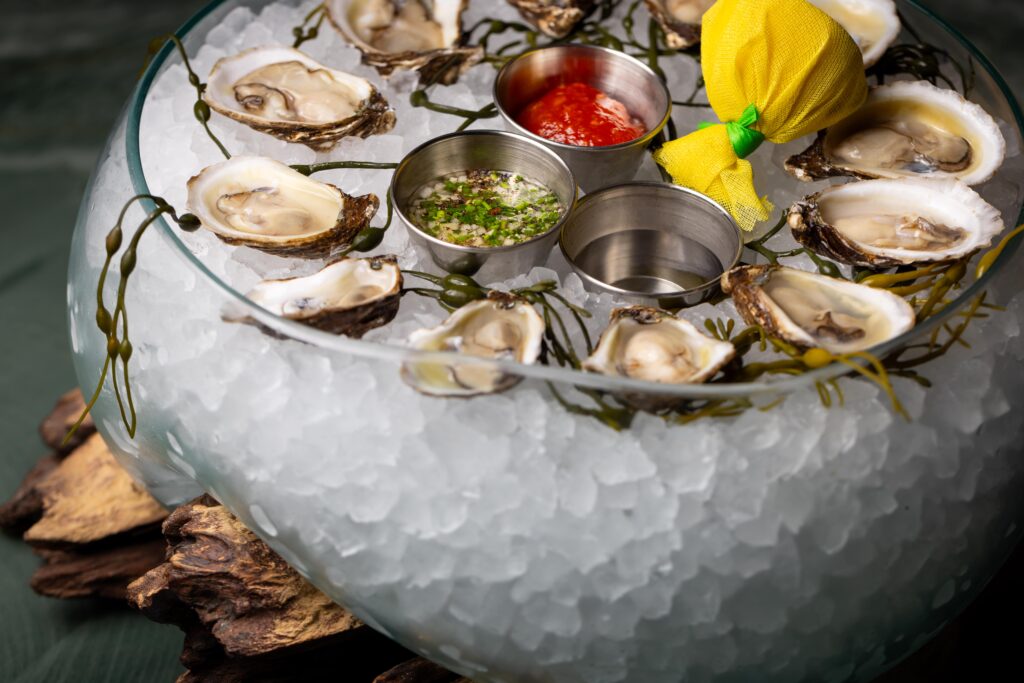
Pez Coastal Kitchen’s Oysters on the Half Shell // Photo Credit: Jakob N. Layman
Executive Chef Bret Thompson and Lucy Thompson-Ramirez are a dynamic husband and wife team that have made a significant impact in the hospitality industry. With their passion for culinary excellence and warm hospitality, they have created a signature name for themselves in the Los Angeles dining scene and beyond and they are now joined at Pez Coastal Kitchen in Pasadena with their magnetic team of top industry professionals Director of Operations Chris Mesa, Chef Joe Gillard, General Manager Brittany Player, and Bar Manager Mike Dane.

Pez Coastal Kitchen’s Bar // Photo Credit: Jakob N. Layman
Chef Bret Thompson’s culinary journey began at the renowned California Culinary Academy in San Francisco where he then honed his skills at esteemed establishments such as Aqua in San Francisco, Roy’s in Hawaii, and Pinot Blanc in St. Helena, California.
Seeking international inspiration, Bret traveled to Spain to study under Chef Martin Berasategui at Restaurante Martin Berasategui, a Michelin 2-star establishment in Lasarte, Spain.
He further expanded his culinary repertoire in Lebanon at Atlas Café, then studied under Chef Bernard Loiseau at La Cote d’Or his Michelin 3-star restaurant in Saulieu, France, and then L’Arpege, Chef Alain Passard’s Michelin 3-star restaurant in Paris.
Throughout his career, Bret also had an extensive tenure with The Patina Group, working at multiple restaurants, running catering operations and ultimately becoming the Corporate Executive Chef overseeing all restaurant operations for the entire group.
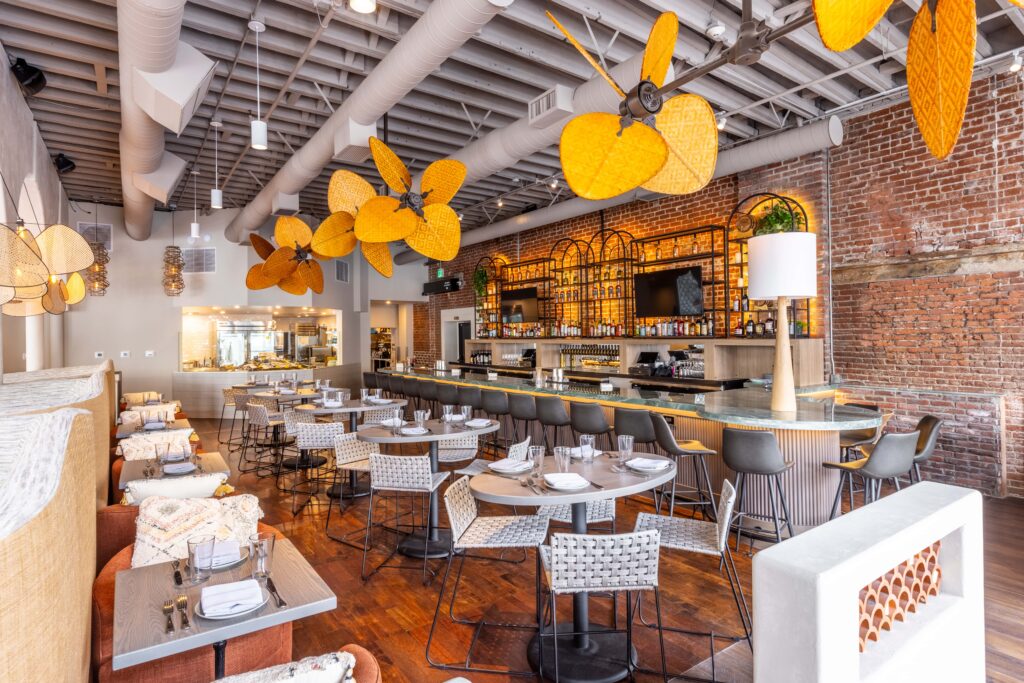
Pez Coastal Kitchen’s Dining Room // Photo Credit: Jakob N. Layman
In 2007 to 2022, Chef Bret Thompson and Lucy Thompson-Ramirez owned Milk Ice Cream, and in 2015 they decided to embark on a new culinary adventure together as the proud owners of Pez Cantina, their seasonal, modern, coastal-inspired Mexican restaurant and bar, located in downtown Los Angeles which quickly became a beloved dining destination and in October 2021, they expanded with a new location in Montebello, California, LA Burrito Co.
Thompson and Thompson-Ramirez’s newest venture will continue their commitment to sea-to-table and farm-to-table cuisine, but as Chef Joe Gillard joins Executive Chef Bret Thompson in the kitchen, the focus at Pez Coastal Kitchen will be on innovative techniques such as curing, smoking, and the specialized dry-aging of seafood which will be a distinctive feature.
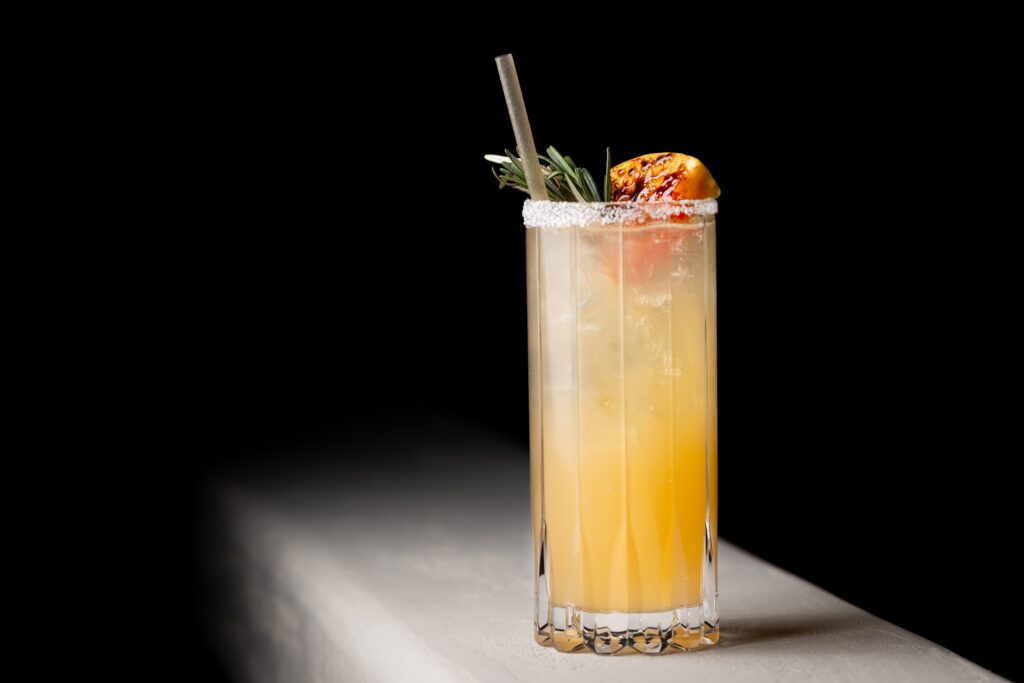
Pez Coastal Kitchen, Rosemary Paloma // Photo Credit: Jakob N. Layman
This new concept will focus on seafood, but will also extend beyond, encompassing meat, poultry, and a unique emphasis on the curing and smoking of meats and seafood, known as Sea-cuterie.
Executive Chef Bret Thompson is excited to go back to his European roots.
“I’m excited to serve seasonal cuisine with a big seafood nuance.”
Executive Chef Bret Thompson
“We will be showcasing shellfish towers like you might see in the streets of Paris at the brasseries. We’ll also be doing whole fish fries, and we have a massive open ice area where guests can see all the fresh seafood, we will be serving each night including whole fish, shrimp, oysters, sea urchin, and whatever is in season.”

Pez Coastal Kitchen, Seafood Tower // Photo Credit: Jakob N. Layman
The Pez Coastal Kitchen Menu starts off with Appetizers which include Chilled Beets with hazelnuts, burrata, winter greens and a hibiscus vinaigrette, the Pez Caesar prepared with gem lettuce, black kale, pepitas, colossal nori crisp, and white anchovies, Black Mussels a la Bouillabaisse with smoked pepper rouille and sesame griddle cake, and Crispy Sweetbreads Fritto Misto with a black lime aioli.
The Chilled Seafood and Crudos decadently spotlight Pez Coastal Kitchen’s seafood at its finest starting with a Chilled Seafood Tower for Two showcasing a ½ lobster, six jumbo shrimp, twelve oysters, four crab claws, and two scallop aguachile shooters, with a selection of sauces – black garlic aioli, mignonette, and salsa macha, Daily Oysters on the Half Shell, Dry-Aged Kingfish Crudo, Hokkaido Scallop Tartare, and Steelhead Trout Rillette served with American sturgeon caviar, forbidden rice cake, and pickled shallots.

Pez Coastal Kitchen, Spaghetti alla Chitarra // Photo Credit: Jakob N. Layman
Pez Coastal Kitchen Entrees
The Entrees are recommended to be enjoyed family-style featuring Whole Fried Fish, Alaskan Halibut, Seared Jumbo Scallops served with a smoked ham-celery fritter and truffled apple salad, Smoked Baby Back Ribs, Prime Center Cut Filet of Ribeye with a green peppercorn demi and Pez fries, Spaghetti alla Chitarra with Manila clams, mussels, and uni nage, and Crispy Half-Chicken with chicken “lule”, petite roasted carrots and radish, apricot, sage, and carrot demi.
Pez Coastal Kitchen Veggies and Sides
And finally, a selection of exceptional Veggies and Sides – Potato Gratin with bacon, gruyere, and cippolini onions, Yam Skins with green tahini, whipped feta and Marcona almonds, Hickory Smoked Cauliflower Steak with a spicy kumquat glaze, and shallot yogurt, and Brussels Sprouts with Red Boat caramel, seed crunch, and black garlic vinegar.

Pez Coastal Kitchen, Citrus Olive Oil Cake // Photo Credit: Jakob N. Layman
Dessert
Dessert is equally exciting with innovative delights such as Warm Chocolate Butterscotch Peanut Butter Cake with honeycomb ice cream, Citrus Olive Oil Cake served with mascarpone pistachio cream, limoncello granité, and strawberry, Mint Chip Ice Cream Brownie Sundae with Chocolate Strings, and Chai Spice Poached Pear with hazelnut crunch, tart yogurt, and blackberry compote.

Pez Coastal Kitchen, Mint Chip Ice Cream Brownie Sundae // Photo Credit: Jakob N. Layman
Bar
Complementing the mouthwatering menu is the well-stocked Pez Coastal Kitchen Bar, a long contemporary bar with a stunning emerald marble bar top, high ceiling, and magnificent fans making it a haven for cocktail enthusiasts and diners alike.
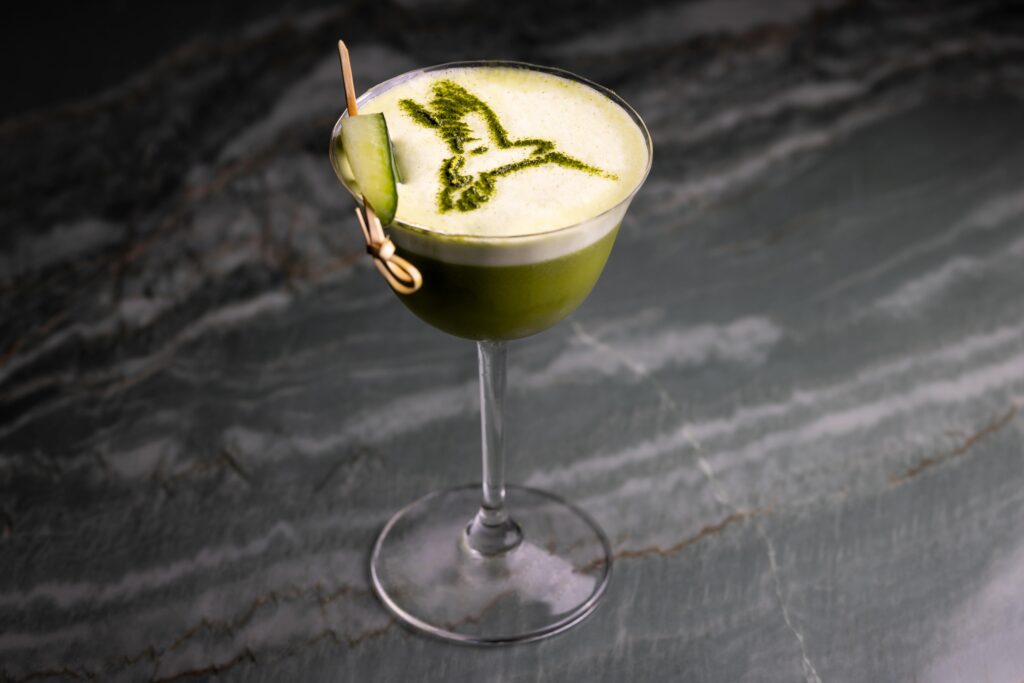
Pez Coastal Kitchen, Matcha Sour // Photo Credit: Jakob N. Layman
Bar Manager Mike Dane has curated an exceptional cocktail program, featuring the Rosemary Paloma, Matcha Sour, Chartreuse Colada, and the signature Happy Wife, Happy Life comprised of Redemption High-Rye bourbon and Liquid Alchemist Apple Spice with a sugared apple crisp, along with an extensive selection of Premier Spirits, Wines, and Beers

Pez Coastal Kitchen, Lounge, Bar // Photo Credit: Jakob N. Layman
Pez Coastal Kitchen sits in a historical building that was built in 1896 and was completely transformed and redesigned by Margee Drews Design to exude a California-Mediterranean coastal feel across multiple spaces.
Guests enter a beautiful light and airy dining room with a stunning feature wall, large plush booths and banquettes with sleek wood tables surrounded by plush greenery, warm and welcoming lounge separated from the dining room by grand Mediterranean arches with high industrial ceilings and romantic Havana-style fans, a prominently placed cocktail bar and open kitchen.
drinks with friends, intimate dinners, group gatherings, or special events
Whether for drinks with friends, intimate dinners, group gatherings, or special events, Pez Coastal Kitchen promises an exceptional experience for all who walk through its doors!
As Co-Owners Executive Chef Bret Thompson and Lucy Thompson-Ramirez continue to innovate and reinvent themselves, and Pez Coastal Kitchen in Pasadena promises a unique blend of California coastal cuisine, thoughtfully crafted cocktails, specially curated wines, and their dedication to excellence ensures an unforgettable dining experience that celebrates vibrant flavors and genuine hospitality.
The Pez Coastal Kitchen official Grand Opening is Thursday, February 15th, 2024.
Pez Coastal Kitchen will be open for Dinnerevery Wednesday, Thursday, and Sunday from 5:00 pm to 10:00 pm, and every Friday and Saturday from 5:00 pm to 11:00 pm.
For more information about Pez Coastal Kitchen or to make reservations, please call 626.210.0775 directly or visit www.PezPasadena.com.
Make this Boutique Winery part of Your Next Oregon Trip!
Why You should make Boutique Bells Up Winery part of Your Oregon Trip!
Bells Up Winery – Accessibility and Experience are worth its weight in wine!
Dave and Sara Specter, owners of Bells Up Winery in Newberg, are proving that a tiny winery (they describe it as “micro-boutique” and “un-Domaine”) can make a lasting impression on visitors who want that special “Oregon Experience”.
Advertisement
How does Bells Up Winery do it?
One phone call, one email, and one pour at a time.
Sara sums it up nicely.
“We were out-of-state visitors ourselves in 2008, and this type of one-on-one owner/winemaker-hosted wine experience was what we loved best, but you hardly see it anymore.”
Their strategy and business plan—producing a scant 600 cases per year across nine wines, and only offering winemaker-hosted private tastings limited exclusively to one group at a time—may sound a bit retro, but it is an intentional throwback to simpler times… when communication and commerce were way more personal and intimate, and far less digital.
Related: Williamette Valley’s Bells Up Winery is Oregon’s answer to music in the bottle
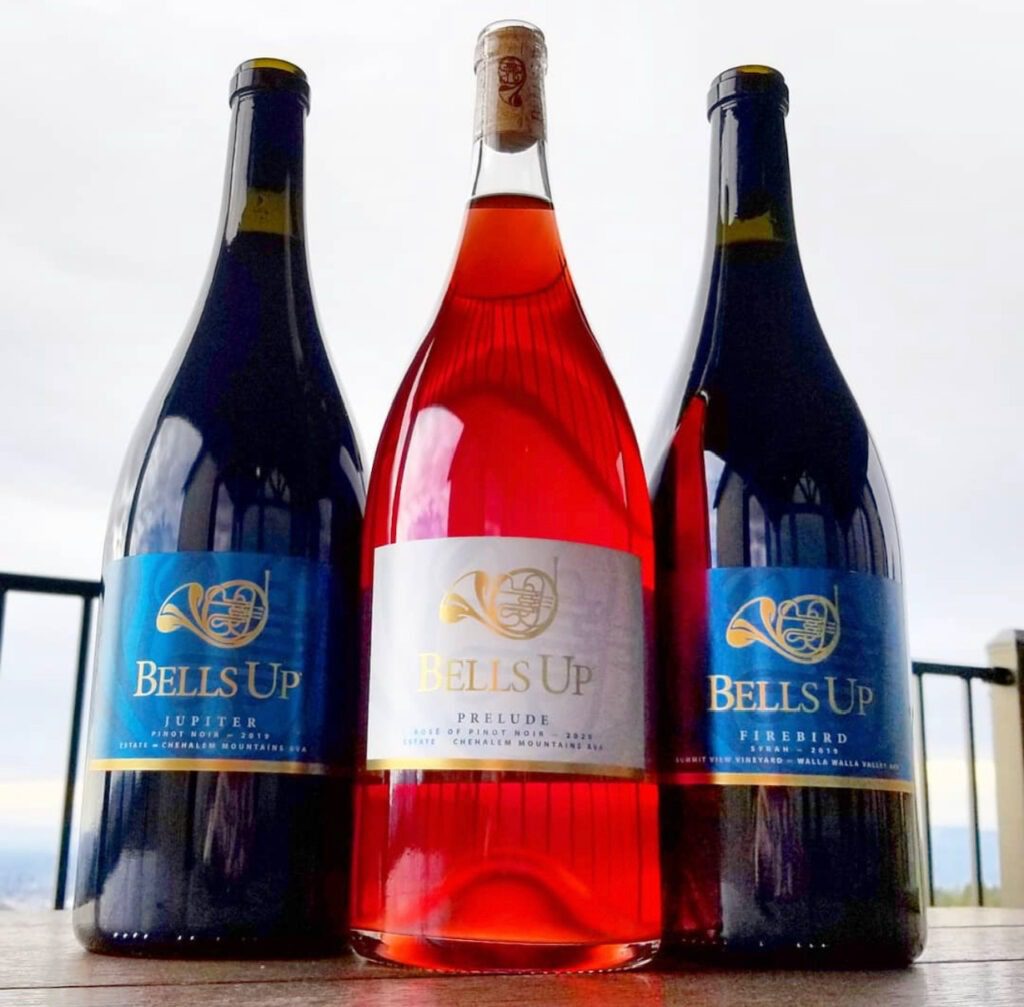
What’s the Bells Up Winery Method
Bells Up Winery is one of the few that do not embrace online sales, online reservations, and SMS text marketing.
Dave and Sara have proved that old school relationship-based wine sales can not only work, but their customers also find it refreshing.
The only way to buy their wine is directly from the winery, either in person or by phone call. Once they’ve gotten to know you and your wine preferences, repeat orders can be made by phone or email.
Related:
SHELÉA Pretty World: Through the Eyes of Alan & Marilyn Bergman at Wallis Annenberg Center June 25
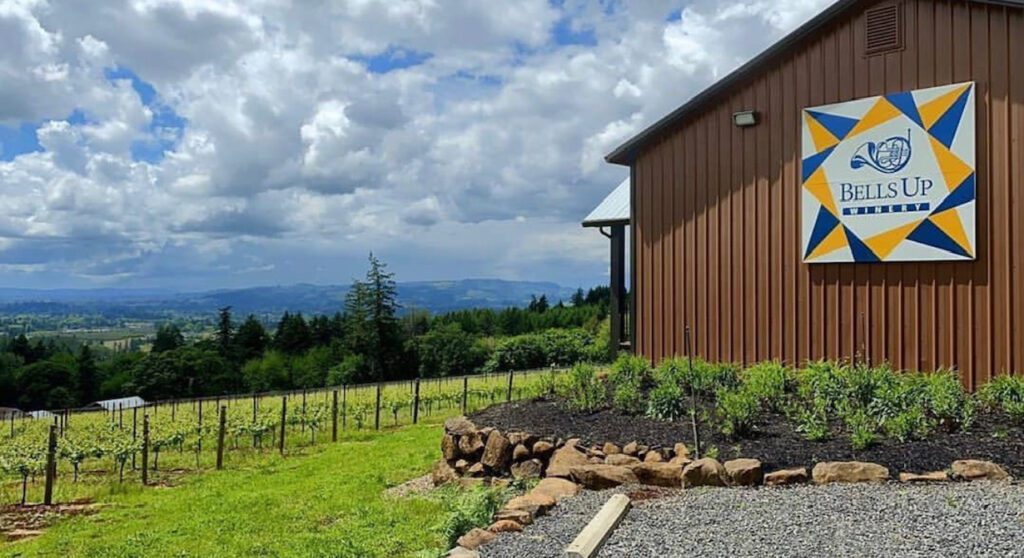
If you are uncertain about a selection, they can either reference your tasting with them or discuss your preferences, then describe the available wines directly to you.
Only accepting tasting reservations by phone also allows them to advise their guests about what to expect in advance, which sets expectations for an exceptional experience. After all, reservations for this $50/person winemaker-hosted tasting are special and limited to a maximum party size of six.
Related: From world-class food and wine, to history, hospitality, nature adventures, UFO’s and more, this Tourism ‘Secret’ is about to explode.
This ensures that Dave and Sara can make the personal connections that create happy visitors that talk about their experience and ambassadors of them and their Oregon travels.
Their managed and controlled growth plan of increasing production only as a wine consistently sells out allows them to stay small, intimate, and personal. They insist that winery production will cap at 1,000 cases, which will allow them to continue their focus on surprising and delighting their visitors.
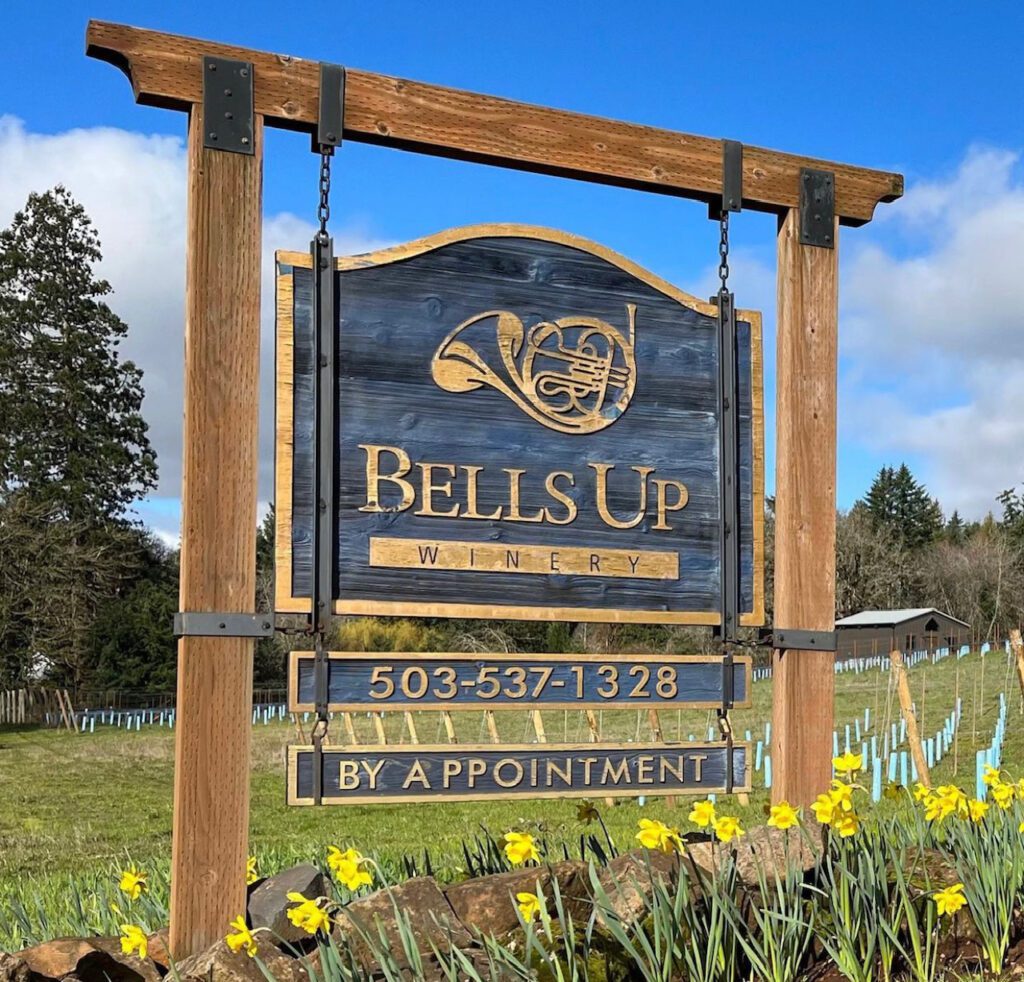
Related:
Love a Quality Martini? Whiskey Old Fashioned? Knox & Dobson Introduces Superior Ready-To-Drink Bottled Cocktails
How does Bells Up Winery do it?
To learn more, visit www.bellsupwinery.com, then phone them at 503-537-1328 to arrange your own Bells Up wine tasting as part of your next Oregon Travel Experience!
Contributed by:
Carl Giavanti Consulting carl@carlgiavanticonsulting.com 971.221.4212
High blood pressure has a new option. Music Producer Ira Antelis created 120/Life to Help Us All Be Healthier
High blood pressure has a new option. Music Producer Ira Antelis created 120/Life to Help Us All Be Healthier
Have high blood pressure? Over 100 million people do. Music Producer Ira Antelis wanted to do something about it, so he created 120/Life to help himself and others become healthier.
“Your blood pressure’s sky high,” founder Ira Antelis ’s doctor told him. “Get it down in 3 weeks, or it’s surgery.” So Ira went started changing his lifestyle. But also, investigating health.
It turns out, there’s answers out there. And he wanted to know more.
Today I sat down with 120/Life’s Ira Antelis for a conversation about music, creativity, getting healthy and Ira’s inspiring message about following your passion and inspirations.
The conversation has been edited for length and clarity. The full conversation can be found on our YouTube channel.
So as we just jump right in, Ira, can you give us a little background on you? What did do for a living before 120 life?
Sure. Most of my life has been writing and producing music. A lot of television commercials. The famous one is a Michael Jordan like Mike if I could be like Mike, which was just in the close the closing credits of the “Air” movie, and 30 years later.
Songs from McDonald’s for Disney, artists like Christina Aguilera, Regina Bell, Patti LaBelle, have recorded or sung my music.
The concept of how I got from there to a blood pressure drink is always like mind boggling to many, and including me, because it’s a path I never would have thought would have arisen to be honest, and it came out of a health issue, and it’s funny because you relate to blood pressure and music. There is a relationship because in music, you put things together. So let’s say I create a piece of music on the piano and say, okay, great. So now I’m going to get a, I wrote the music, I’m going to get… The bass player, I’m going to get the drums, I’m going to get the violins, and then I’m going to put it all together. And I’ve been doing that for many years, it’s like putting ingredients together. And a health issue my blood pressure had risen really high, dangerously high. And then we’re like you have to get this fixed.
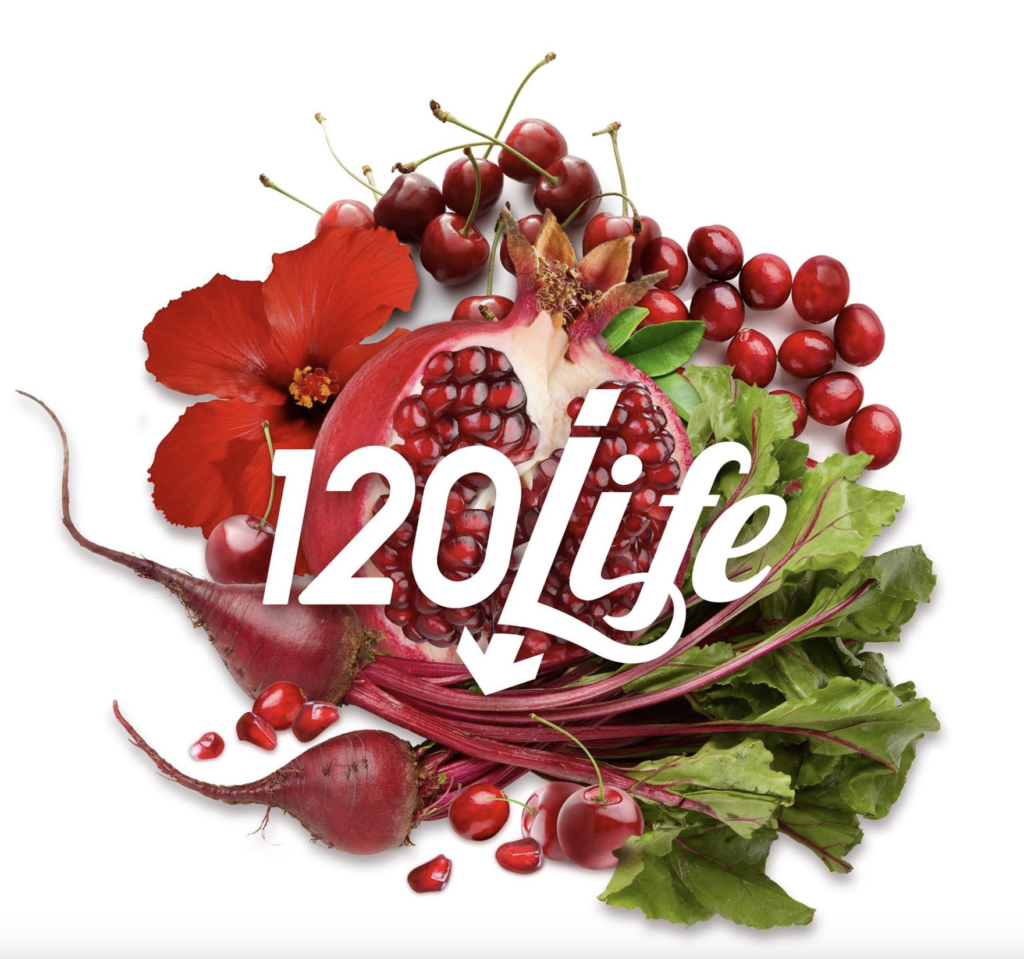
If not, we’re going to have to do surgery. Because over time, the first thing anybody I think would do is say what if you have high blood pressure. What do you do? What do you eat? What do you drink? And when it came to the drinks, I kept reading about these things that they all have studies.
I was like, wait a minute. Pomegranate juice, I’m reading the studies. You drink it for six weeks. And one day it just struck me. If I take all of these ingredients, I think it’s like mixing a piece of music and putting them all together. I just knew in my mind they would work because I think the music related to the blood pressure and that’s how it all began.
You literally almost produced a beverage in the same way you produce music.
You brought in several elements together, let’s say drums, a guitar, a vocalist, all the elements of a band. You thought of it like that, but you found these superfood ingredients and said, gosh, these ingredients could all work together.
Yes, that’s 100% correct. Now what I was doing is that I think like I’m going to produce this drink like I’m producing music. No, but I’ve had a recording studio for 30 years of my life and I’m making music every day of my life.
It’s just secondhand nature to do things in combinations for me. So when I thought about it later on, I’m like, Oh yeah, that’s why it works. I saw the ingredients, they look the same. I knew I can mix them together. Just from my process of music. I think that’s what happened.
If you’re doing the music every day, do you think you use creativity to solve a health concern?
Yeah, I think on some level that’s what happened. I was looking at things and I saw it, but in a way maybe nobody else saw it. And I think when you’re a creative person, then that tends to be the, where you go first on some level. I’m always thinking of things from a creative standpoint.
Is there a life lesson at all in here for people, using creativity and trial and error and the confidence to try new things.
Yeah, it’s funny because I did this music project with music from the Holocaust. And we, I wrote the Carnegie Hall and we sold it out, beyond the most successful thing in my life. And I was sent to somebody, if I had to write a book about my life, I would title the book, “Everybody Says No”. And I think that’s the way, the mission of my life don’t ever let anybody stop your ideas. Ever.
If you are passionate about anything, go figure out a way to do it. And I think it’s a life lesson about creativity. What it is, go do it.
So from a step by step process, you have a doctor’s meeting, you’re told you have a health concern, can you just walk us through what those next steps were?
So the first thing somebody tells you, you have extremely high blood pressure. It has to come down. And most of the people I’ve ever met would say we know what high blood pressure can do.
But my question was not that. My question is what is causing the high blood pressure? What is it? My dad was a pharmacist; he knew about strokes and heart attacks. I was trying to figure out what it is and how do you stop it?
And the truth is even though the doctor is a friend of mine that they will basically go figure it out.
First thing I learned is to cut your salt. That was stop number one. Most studies show if you cut your salt, it will lower your blood. I’m just doing everything I can do, even taking medication. I’m going on a salt free diet for three weeks. So you have fruit, vegetables, but not just salt. Every cookie that has sodium, I’m not eating.
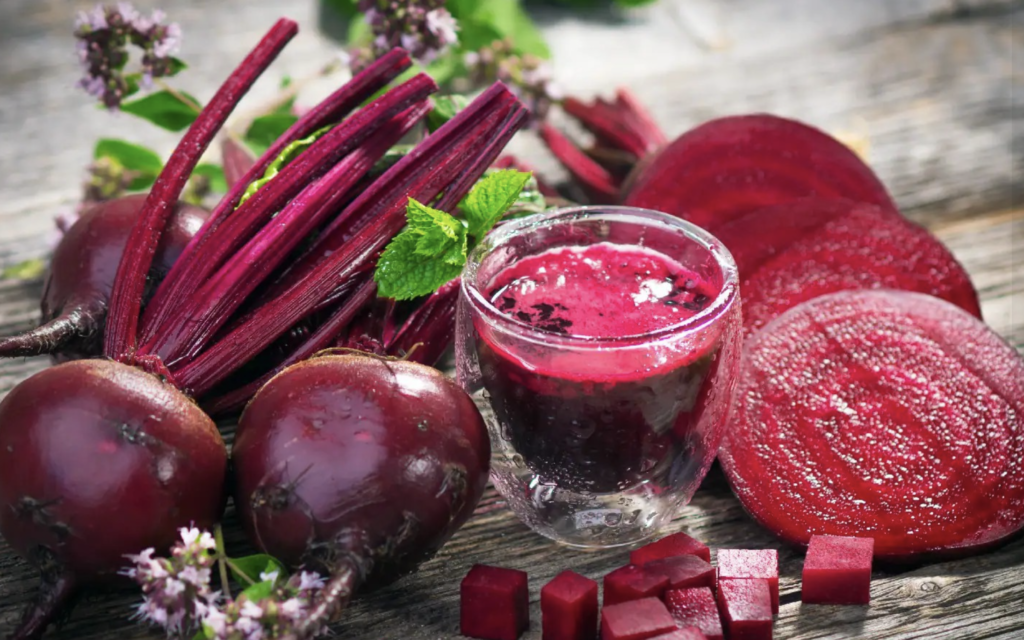
That was like step number one.
Then I’m Googling what are the best foods to eat? What are the best things to drink? And that began the process. Reading about these did lower my blood pressure to the point where they didn’t have to operate.
But you get stuck or passionate about some things. So every day I’m on the computer, looking up drinks for high blood pressure. Many of the same things come up, beet juice or beet powder, lowers your blood pressure. Hibiscus tea lowers your blood pressure. Pomegranate juice
I’m reading the studies. Then one day It just dawned on me. Wait a minute if all of these lower your blood pressure a little bit. Together, maybe it will lower it a lot.
I figured, somebody had done it. Not only was that not there. Even to this day, there was nothing there. Zero.
There’s 110 million people that have high blood pressure. And there’s nothing, there is not a drink out there with these ingredients.
Yeah. But that began the journey.
So on this journey you had different levels of support. You have a nutritionist in your life, Susan Schachter, talk about her involvement
So as I’m making this drink, [I’m thinking] what’s the best way for people to try it? So I kept thinking, okay, I’m going to make these jugs that contain 112 ounces. And I would give it to people that I knew had high blood pressure and say try it for two weeks. I’m doing that because one of the people I gave it to is my cousin who at the time was the sole distributor for Keurig the coffee machines and the K cups. I’m thinking okay I need to get him to distribute this drink.

So I gave it to him and said look if your blood pressure lowers from this drink, you got to promise me you’ll distribute it. He said, ‘Okay’, because he’s very skeptical and he thought there’s no way.
And sure enough, his blood pressure lowered 30 or 40 points. He said, ‘Okay, I’ll distribute it. But, what do you know about this stuff?’
My childhood friend Susan Schachter has a Master’s in nutrition. I sent her the drink. She made some tweaks and that’s how I got her involved.
Can we go through all six natural ingredients?
Let me start with beets; the superfood for athletes so I knew I was going to have beets in my drink.
Hibiscus tea has been around for years and have said a multitude of studies. even in the Middle East about lowering your blood pressure. I think some of the qualities are in medical terms that can act like an ACE inhibitor.
The third ingredient is pomegranate juice. It can act as a beta blocker. It has a lot of antioxidants. So I think those three were the really big things in the drink.
Susan added magnesium and potassium. It relaxes your blood vessels.
Through the studies, I was reading about cranberry juice and tart cherry juice, which has been used for recovery for athletes for soreness of muscles.
I enjoyed the taste. I’m always worried health products will “taste like science” Your drink doesn’t. What does it taste like to you and how do you recommend drinking it?
The most important thing is it can probably really help you. Some people really like how it tastes.
I say mix it with cranberry juice or put it in your smoothie, especially now we have a powder. So there are different options. I think the point is that high blood pressure is not something to mess around with. Too many bad things could happen.
Is there anything that you want to talk about?
We’re in a society where people age out, we become disposable after a certain age in so many industries, so I’m inspired by my own story, 60 years old rather than retiring or doing something I had the wherewithal to say, I’m going to do this, it’s never too late in life if you want to do things.
And I think that’s a message for a lot of people. Most people do not start a business at 60. But my thought is like, you have this passion, you have this dream, go for it. I’m very thrilled to just be a part of it. I let my CEO run it.
The second thing is that I, we always say to people, Susan always says, know your numbers. Be responsible with your health. Drink 120 life. Pomegranate juice. Beet juice, Hibiscus tea, Cut your salt. That’s my message.
Please tell us how can we help you. Please tell us how to find your website and where to browse your products
Ira: If you want to try 120 life, www.120life.com
If you want to try it for two weeks, purchase it. But if you’re unhappy for any reason, money back guaranteed.
So thank you so much for your time. Thank you for discovering this health idea.
Thank you. You have a great day.
